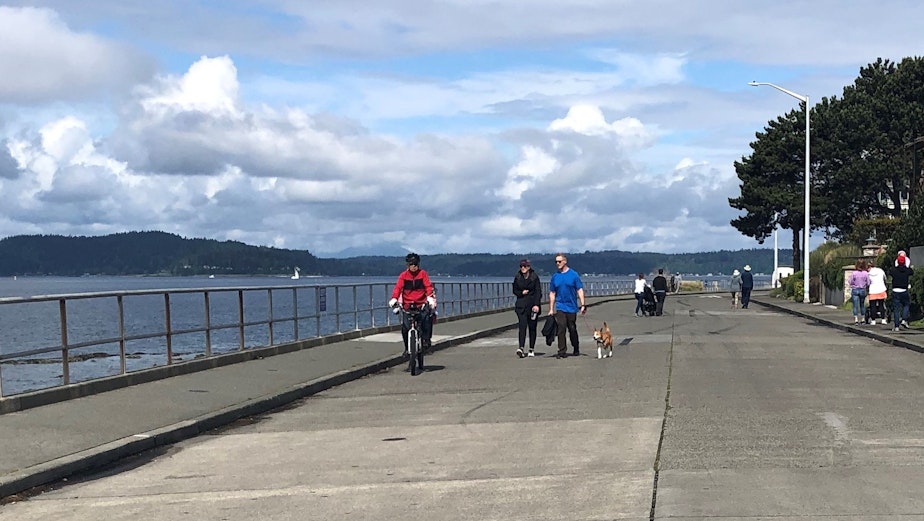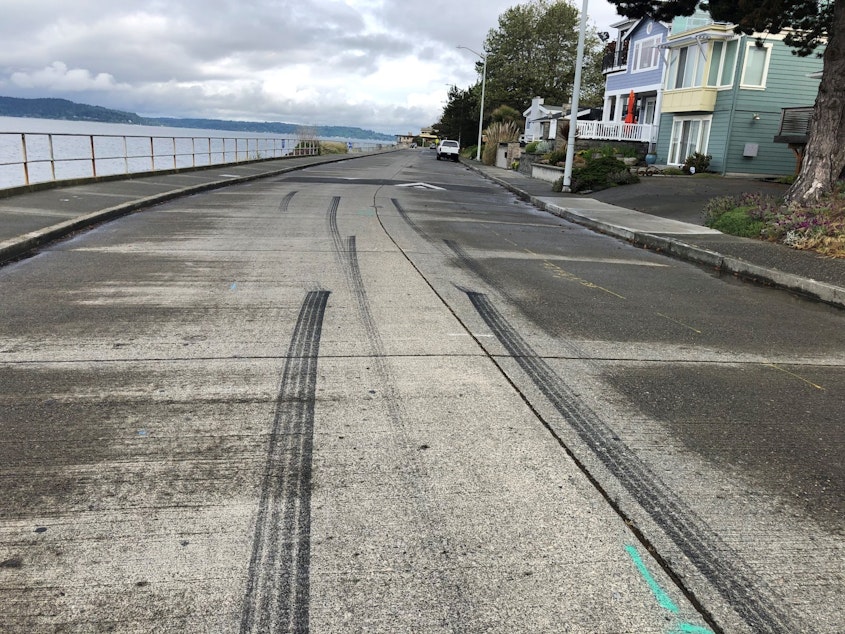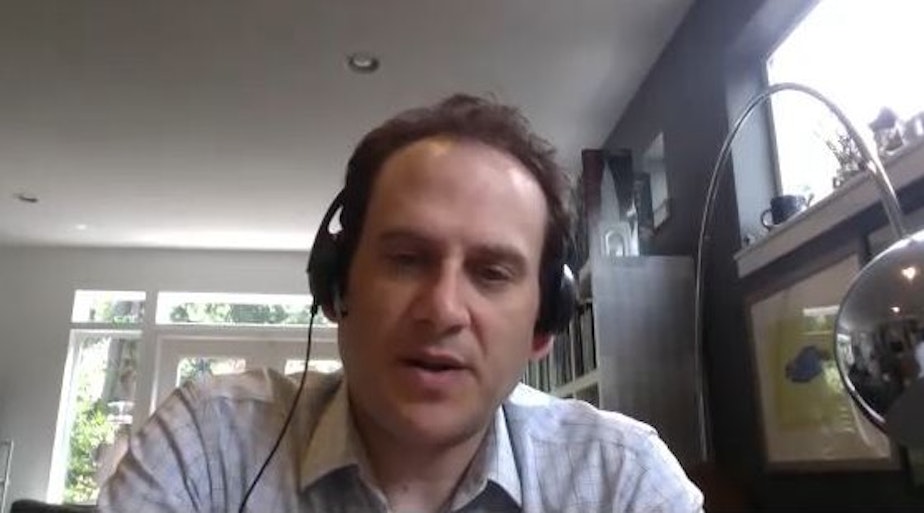Not all closed Seattle streets will stay closed after the pandemic

Seattle has recently closed more than 20 miles of streets to most vehicle traffic, in an effort to give people more space to get outdoors. The aim is to reduce crowding in public spaces during the pandemic.
The closures are also part of a larger strategy to change some of our transportation habits, long term.
But not all of those street closures will outlast the pandemic.
Lynn Drake lives near Alki point in West Seattle, where some streets that run along the beach are now closed to through traffic.
Drake says, before, it didn’t feel as safe to walk here.
“We actually had an incident a couple of months ago where we had -- you can see the tire marks here -- there was a lot of smoke and spinning tires and basically a big street show drag race," she said. "And the cops came in in great numbers and broke it up. But it basically terrified the neighborhood.”

But now, those cars are gone, and neighbors have been using the street for exercise after being cooped up at home.
Sponsored
The city calls these Stay Healthy Streets if they’re permanent, or Keep Moving Streets if they’ll expire after the pandemic.
You can still drive a car down these streets, but it’s only for local access and deliveries.

Drake ran into her friend Amanda Gilbert, who rides up this street every day in her wheelchair.
“I love the fact that it’s shut to traffic because I just rolled up the for the first time in the middle of the road which is so great because it’s too narrow and everybody opens their car doors and it’s a really high curb so you can’t get too close because you’ll fall off in a wheelchair," Gilbert said. "Now it’s great. There’s room for everybody.”
Sponsored
And the only infrastructure the city needed to make it happen was a cone at each intersection and a sign with some sandbags on top so the wind doesn’t blow them away.
Reporter's note: Most of the photos in this post were taken before King County's face coverings directive went into effect. The directive advises people to wear masks, scarves or bandannas in public places where social distancing is not possible. Whether that means masks are necessary on Stay Healthy streets depends on how crowded they are.
Gordon Padelford is with Seattle Neighborhood Greenways. He applauds the vision of these streets. But he also wants the city to build much more than 20 miles of them.
“We’ve all been inspired by Oakland which has come out with a proposal to go to 74 miles, New York and Portland are talking about 100 mile networks,” he said.
Sponsored
Padelford says Seattle could easily do 130 miles.
“One gap we really see is in our more dense neighborhoods where people may not have a backyard or a balcony and public space is really at a premium and tends to be crowded," he said. "So that’s an area where there needs to be significant investment if we’re gonna make sure this program is really serving everyone.”
But closing a downtown Seattle street to through traffic would be a much bigger lift, according to Sam Zimbabwe, head of Seattle Department of Transportation. A big project like that would draw out critics with big concerns.
“We’re in a tough place – in terms of engaging communities right now,” Zimbabwe said.

Sponsored
Normally, if you want to do something to a street that would take away parking, for example, or close a major thoroughfare, you’d hold a public meeting, where concerned stakeholders can have their say. The more controversial the project, the more important it is to have a robust public debate.
During the pandemic, Seattle has moved many meetings online. But Zimbabwe wasn’t sure that online process would work for more ambitious projects. And with much of the transportation department working from home, they have staffing limitations, too.
“So for us the Neighborhood Greenway network was a way to rapidly build out enhancements where there’d already been a lot of that community engagement already,” he said.
That’s why some of these streets are permanent, and some will expire after the pandemic: Only those built on top of existing neighborhood Greenways have received what passes for a public vetting.
Sponsored
Still, in the long term, Zimbabwe says we need to give people alternatives to driving in their cars. Because when the pandemic ends, people may not go back to buses right away. And if they all choose to drive, that could mean worse traffic than before the pandemic.
“If we don’t take these steps – and people feel like their only choice is to drive – then we won’t be successful in the long term economic recovery of the city as well,” said Zimbabwe, because gridlock hurts the economy.
So on the surface, these Healthy Streets give people space to exercise. But underneath, they’re part of a larger strategy to help us rethink how we get around after the pandemic.

